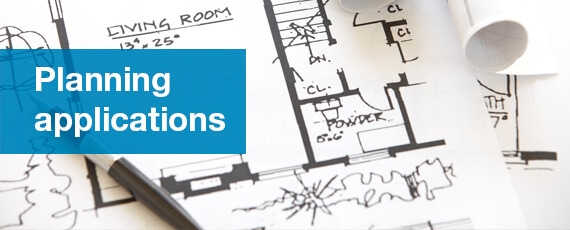Getting planning permission can be key to the success of your building or development project. Most of the bridging lenders we work with do not require planning permission prior to making an application. Accordingly, it is best to see if you can get the finance first before going through the application and process of getting planning permission.
When you will need planning permission: If you are adding to the exterior of the building – whether it is adding extra rooms, floors or extensions, this could be blocking a neighbour’s sunlight, driveway or getting too close to the home. Therefore, you have to ask permission from your local council.
When you do not need planning permission: For an internal renovations or refurbishments, this is not affecting any neighbours or people around you (except maybe some noise). Therefore, you do not require planning permission if you are just changing the interior design of the home, breaking through some walls to improve the layout or adding a conservatory provided that that it is no longer than 10 feet. You may need advice if you are looking at converting a garage into a room and how this will impact those around you.

What is planning permission?
Planning permission is required if construction of a new building or extensive changes to an existing building are to go ahead. This will require an applicant receiving consent from the local planning authority in the form of planning permission.
The reason you need to obtain this permission before you can build or change anything extensively is that the system has been designed to control inappropriate development. For example, you are not likely to get planning permission for an ultra-modern home situated in the countryside, surrounded by traditional farmhouses. The system makes sure all buildings are appropriate and in-keeping with the surroundings.
You will need to get planning permission if you are building a completely new house, adding outbuildings or building on an extension. It does depend on the size of the project and the level Permitted Development rights afforded or still remaining on a property.
Approved or Rejected: How are applications decided?
The local planning authority will aim to base its decision on a set of ‘material conditions’, which can include – but are not limited to:
- Parking
- Highway safety
- Noise
- Overlooking/loss of privacy
- Traffic
- Layout and density of building
- Impact on a listed building and the surrounding area
- Design, appearance and materials
- General government policy
- Disabled access
- Nature conservation
- Proposals made in the development plan
- Previous planning decisions
In England and Wales, neighbours are often consulted with and invited to comment on the plans alongside the local parish councils. However, only objections which are based on material considerations will be taken into account. If there are objections of this nature, the decision will be made by a majority vote by the local planning committee. If there are no objections and the officers recommend approval, then the council will usually grant the planning permission using what are known as delegated powers. Having no objections will clearly speed up the process for an applicant.
Permitted development rights
At the very beginning of the planning systems creation in 1948, the concept of permitted development. In the Town and Planning Act on the 1st of July 1948, this concept allows for minor improvements, such as a modest extension or a lost conversion, to your own home can be taken without having to file for planning permission so not to clog up the system with minor adjustments to a property.
The level of work that can be carried out under Permitted Development depends entirely on a variety of factors. These include the extent of work already carried out on the property and the location of the property (Areas of Outstanding Natural Beauty have different rules, as to Conservation Areas).
How much will an application for planning permission cost?
When applying for planning permission, there will be a fee. You can except the fee for submitting a planning application to vary depending on the nature of your requests for the transformation of a property or building of one.
The cost of a full application currently sits at £462 for the creation of a new dwelling in England, however, the fees are different in Scotland, Wales and Northern Ireland respectively.
For an extension, an application made in England will cost £206 as it stands. Meanwhile, the typical cost for this in Wales is £190.
In addition to the fees for the actual application, further smaller payments can be made for the discharge of ‘planning conditions’ which must happen before any kind of building, development or renovation occurs.
What are planning conditions?
Planning permission will be subject to certain planning conditions which are required to be met and agreed within a given period of time. The planning conditions are absolutely essential and failure to comply may result in what is known as a ‘breach of condition notice’. If you receive this notice, there is no opportunity to appeal and may even go through the courts of prosecution.
The conditions can be very simple and usually are, such as the requirement to use a certain type of material to match the existing ones or the surrounding buildings.
You can apply for planning permission here.
